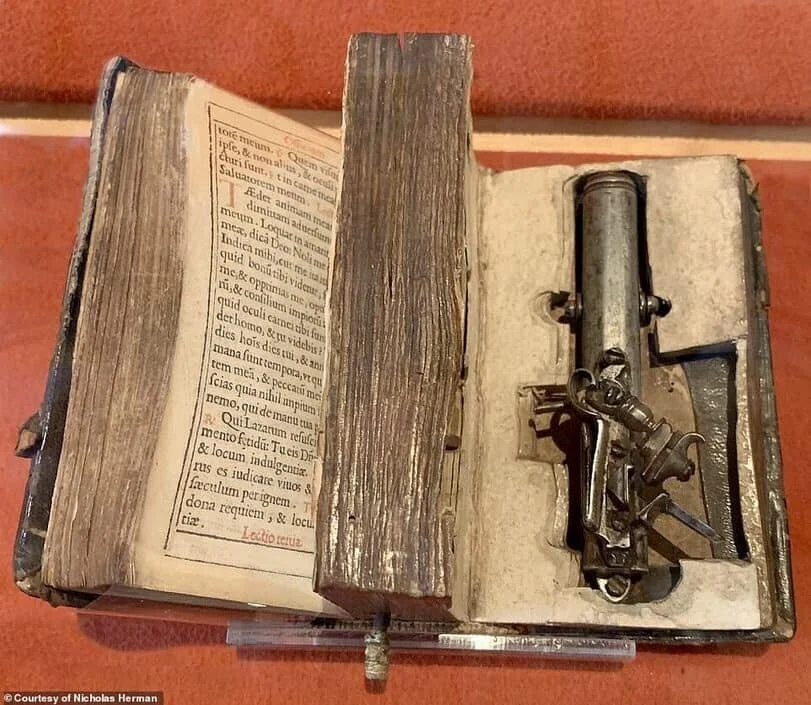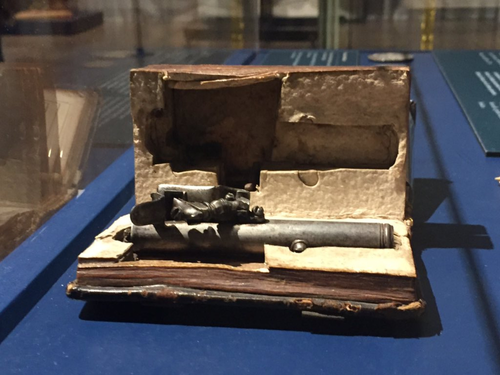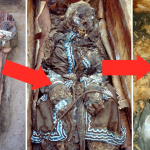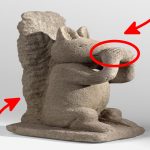The Doge of Venice Francesco Morozini’s Bible Gun, his covert weapon

In the annals of history, tales of ingenuity and intrigue often emerge from the shadows of the past, revealing the remarkable lengths to which individuals would go to protect themselves in times of uncertainty. Among these tales, few are as captivating as the story of the gun hidden within a bible, crafted for Francesco Morozini, the Doge of Venice (1619-1694). This extraordinary artifact, now on display at the Museo Correr in Venice, serves as a testament to the resourcefulness and cunning of its creator and owner.

The concept of concealing weapons within seemingly innocuous objects is not a new one, but the execution of such a design with the precision and elegance displayed in Morozini’s bible-gun is truly remarkable. Crafted during a tumultuous period in Venetian history, when political intrigue and rivalries were rife, the weapon served as a discreet means of self-defense for its owner, allowing them to protect themselves against potential threats without drawing undue attention.

The mechanics of the weapon are as ingenious as they are deceptive. Hidden within the pages of the bible is a small, finely crafted pistol, its sleek barrel and intricate mechanisms concealed beneath the leather binding. A silk bookmark, attached to the pistol’s trigger mechanism, allows the owner to fire the weapon with a simple tug, even while the book remains closed. To the casual observer, the bible appears no different from any other, but to its owner, it represents a potent tool of self-preservation.
The significance of Morozini’s bible-gun extends far beyond its function as a mere weapon. It serves as a symbol of the precarious nature of power and authority in Renaissance Venice, where political maneuvering and clandestine dealings were the norm. As Doge, Morozini would have faced numerous challenges to his authority, both from within the city-state and from external threats, and the bible-gun would have provided him with a measure of security in an uncertain world.

Moreover, the artifact offers a fascinating glimpse into the intersection of art, craftsmanship, and technology in the Renaissance period. The meticulous attention to detail and the precision engineering required to create such a weapon speak to the skill and expertise of its creator, who would have been a master craftsman of his time. Each component of the pistol, from the delicately carved stock to the finely machined barrel, bears witness to the craftsmanship and artistry of Renaissance Venice.
Today, Morozini’s bible-gun serves as a reminder of the resilience and resourcefulness of individuals in times of adversity. It stands as a testament to the enduring human desire for self-preservation and security, even in the face of seemingly insurmountable challenges. As visitors to the Museo Correr in Venice marvel at this remarkable artifact, they are transported back in time to an era of intrigue, danger, and innovation – a time when even a bible could conceal a deadly secret.











